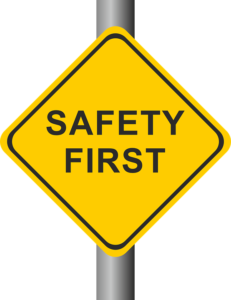 Most employers recognize that an office can pose some health risks, even if just from slips and falls. The Health and Safety Work Act of 1974 requires that employers take “reasonably practicable precautions.” The concept behind these regulations is not to eliminate all potential risks, but to identify those that are most likely and minimize or mitigate the risk.
Most employers recognize that an office can pose some health risks, even if just from slips and falls. The Health and Safety Work Act of 1974 requires that employers take “reasonably practicable precautions.” The concept behind these regulations is not to eliminate all potential risks, but to identify those that are most likely and minimize or mitigate the risk.
Take a tour of your office, clipboard in hand. Note down possible risks. Ideally, have more than one person conduct such an assessment. Once the list is complete, sort it into low, medium and high risks. Stairs, for example, could be low risk if they consist of one or two steps but high risk if it is a full flight in a high traffic area. Look for conditions that may pose other risks, such as frayed electrical cords, extension cords and places where visitors may track in water when it’s raining.
High-risk areas should receive attention immediately. That front entryway that becomes wet and slippery with any rainfall calls for urgent action to prevent falls. Lay down absorbent floor mats (make sure they stay flat to prevent creating an entirely new trip hazard!). Place signs near the door that highlight the potential for a wet floor whenever it rains or snows. Work your way down the list and deal with other risks – some low-risk situations may not need any action. Many solutions are simple, such as painting a single step a light color to make it more noticeable. Develop safety policies that cover issues such as the use of extension cords, immediate attention to liquid spills or the need to keep walkways clear of boxes. Make sure your staff is informed of these policies and enforce them.
Once you’ve completed your risk-reduction activities, go back and make another inspection. From then on, you should conduct an inspection periodically (at least annually) to ensure that your office remains safe for employees and visitors. If you need help with any part of this process or advice on office configuration, please contact us at Office Innovations, Inc.